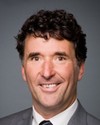Mr. Speaker, I congratulate the member for becoming the new health critic for the New Democratic Party.
As the health critic, could he explain to me why the bill was sent to the public safety committee instead of to the health committee?
This bill was last introduced in the 41st Parliament, 2nd Session, which ended in August 2015.
Rona Ambrose Conservative
This bill has received Royal Assent and is now law.
This is from the published bill.
This enactment amends the Controlled Drugs and Substances Act to, among other things,
(a) create a separate exemption regime for activities involving the use of a controlled substance or precursor that is obtained in a manner not authorized under this Act;
(b) specify the purposes for which an exemption may be granted for those activities; and
(c) set out the information that must be submitted to the Minister of Health before the Minister may consider an application for an exemption in relation to a supervised consumption site.
All sorts of information on this bill is available at LEGISinfo, an excellent resource from the Library of Parliament. You can also read the full text of the bill.

Carolyn Bennett Liberal St. Paul's, ON
Mr. Speaker, I congratulate the member for becoming the new health critic for the New Democratic Party.
As the health critic, could he explain to me why the bill was sent to the public safety committee instead of to the health committee?

Murray Rankin NDP Victoria, BC
Mr. Speaker, I thank my hon. colleague for all her efforts on health reform in Canada. I much appreciate her comments.
Why this bill was sent to the public safety committee rather than the health committee is simple. It is because the government does not see this as a health issue. It sees it as a law enforcement issue. It wants to spend more money to maybe put more addicts in jail, and maybe that will make the world a better place. That is contrary to the evidence of Dr. Julio Montaner, a world expert on AIDS, who says that the government “just doesn't get it” and has put up roadblocks with this stacked deck of criteria.
That is why the government sent it to the public safety committee rather than the health committee, because it does not even accept that we have a public health crisis in our cities.

Paul Dewar NDP Ottawa Centre, ON
Mr. Speaker, I want to thank my colleague for his great analysis.
When he was speaking, I was harking back to 2011 when I was invited to Oakland for an international conference on HIV-AIDS prevention and how to deal with it. Guess who was the keynote speaker? It was the model of prevention, our friends from Vancouver. We were on the international stage, but, meanwhile, back home the government was challenging them. I was asked as a Canadian politician to explain that and I could not. However, at the same time, Oakland had declared a state of emergency because of HIV-AIDS. The people were saying that we had to stop locking up people for drug use and start helping them. They were really looking to Canada as a world leader in this area because we were seen as a model.
How is this health approach important versus the public safety approach? It is despicable that people would try to make money off victims. Maybe you could talk about the different approaches of health versus public safety.

The Acting Speaker Barry Devolin

Murray Rankin NDP Victoria, BC
Mr. Speaker, I am very proud to come from British Columbia, which has the first safe injection site in North America, welcomed by the police, the province and business. It makes me proud.
However, it makes me sad and angry at the same time, because a few kilometres away from where I live people are dying on the streets. When people come to my community, they ask me about this public health measure. They ask me if I think they can get one of those facilities in Victoria. I look at the legislation, shake my head and tell them I do not see how they can. We have to wait for the lawyers to once more take this to the Supreme Court of Canada, and once more get it struck down. In the meantime, this is no joke. People are dying.
I am proud my colleague went to Oakland and saw Vancouver featured on the international stage. I am hopeful that in the Senate, Senator Campbell, who has been such a champion of this, will do what he can do to see if we can get back on track with such an important initiative.

Elizabeth May Green Saanich—Gulf Islands, BC
Mr. Speaker, I agree with every word in the speech by my friend from Victoria. Bill C-2 is not so much a disguised attempt but a blatant attempt to do indirectly that which the Conservative administration could not do directly, which is prevent the building of any new Insite clinics.
As for use of this issue politically, I harken back to when the former minister of foreign affairs—now we must refer to him only as the member for Ottawa West—Nepean—was in the Mike Harris cabinet. He said that they wanted mandatory tests of drugs for welfare recipients because “We don't want to see them shooting their cheques up their arms”. It is a long-standing use for propaganda and for fundraising.
I want to draw his attention to one of the many criteria that are there for purposes of defeating the building of an Insite clinic. They are listed as A through Z and Z1. There is one that says before a clinic is built an applicant must provide the CV and work history of senior employees.
Could the hon. member for Victoria recall any instance in his experience where a facility that does not yet have a permit to be built knows the names and has the CVs of every senior employee?

Murray Rankin NDP Victoria, BC
Mr. Speaker, I want to thank my hon. colleague and friend from Saanich and the Islands for all her work on this important initiative. We tried to have amendments she brought forward, supported by the NDP, to have this entire travesty repealed, but we were unsuccessful.
I have never heard of a criteria requiring CVs for every employee in any such statute. When the member talked about A through Z and Z1, I am still debating with myself just how many criteria there are. A through Z is 26, but then there is one that seems to say anything can be prescribed, anything the minister considers relevant.
We do not even know how many criteria there will be. We do not think there will ever be any safe injection sites as a result of such a wrong-headed and mean-spirited statute.

Steven Fletcher Conservative Charleswood—St. James—Assiniboia, MB
Mr. Speaker, I listened to the member's comments carefully. I was involved in this debate when I was parliamentary secretary and before that, as health critic. The terminology is important. It is not a safe injection site in Vancouver. It is called a supervised injection site. Would the member agree that there is no such thing as a safe injection site or safe injections?
If I understand the member correctly, he wants facilities to be BYOH, “bring your own heroin”. Is that what he is suggesting?
Is he offering up his riding for a supervised injection site that he is promoting so valiantly today?

Murray Rankin NDP Victoria, BC
Mr. Speaker, those are three questions, but I will try to be short in response to my hon. colleague.
“Supervised injection site” is the right terminology. They are safe, however, because no one has died at Insite as a consequence of injecting there.
BYOH is insulting. This is not what I want. The Supreme Court of Canada addressed the fact that people were allowed to bring their drugs there for safe injection under supervision.
My riding will not have any sites because this law will not allow, in the real world, any such facilities to be licensed.
The House resumed consideration of the motion that Bill C-2, An Act to amend the Controlled Drugs and Substances Act, be read the third time and passed.

Carolyn Bennett Liberal St. Paul's, ON
Mr. Speaker, today we are debating Bill C-2, An Act to amend the Controlled Drugs and Substances Act, at third reading.
I have a couple of other suggestions for the name of this bill. It could be called “the refusal to honour the ruling of the Supreme Court of Canada bill”. How about “the pursuing ideology versus evidence act”, or “the refusal to save the lives of people with addictions act"?
This bill was introduced in response to the Supreme Court of Canada 2011 ruling that Insite, in Vancouver's Downtown Eastside, had been proven to save lives and reduce harm, and that the government's efforts to close Insite would violate section 7 of the Canadian Charter of Rights and Freedoms to life, liberty, and the security of the person. It is clear that the government did not like this ruling, and therefore has tried to go about refusing to honour the ruling by another route.
It is also clear that this bill will not fulfill the spirit of the court's ruling. Rather, it would make it cumbersome for a group or municipality to apply for a section 56 exemption to the Controlled Drugs and Substances Act which allows a facility to operate. However, the likelihood of any future sites opening in Canada would become slim to none. Making matters worse, Vancouver's Insite would have to apply for a renewal based on the same 26 different criteria as new applications, as well as two additional provisions.
Section 56 of the CDSA gives the Minister of Health discretionary powers to grant exemptions from the act under one of three categories. They are medical purposes, scientific purposes, or in the public interest. Of the exemptions that have been granted for activities with illicit substances, two types are for law enforcement purposes. These are to train sniffer dogs using seized drugs in the public interest and to allow the Vancouver Coastal Health authority to operate Insite. It was initially for scientific purposes, but since the Supreme Court's decision, it is considered a medical exemption.
The government's intentions have been clear from the beginning. It has always opposed Insite and has been trying to close it down since it formed government. Thankfully, the work of the community of Vancouver and the courts have stopped these attempts.
I would also like the opportunity to thank the member for Vancouver Centre and the Liberal Party of Canada health critic for her tireless efforts on this file to ensure that public policy is based on evidence and not ideology.
This is an ideological bill based on crass political motivation from a government that has always opposed evidence-based harm reduction measures such as safe injection sites. Only an hour after the legislation was introduced, Conservative campaign director Jenni Byrne issued a crass and misleading fundraising letter to supporters, stating that the Liberals and the NDP wanted addicts to shoot up heroin in the backyards of communities all across the country.
Despite this bill being tabled by the Minister of Health, it was given to an enforcement department, the committee of public safety and security. This is further evidence of the government's view of addiction as a criminal act. The public safety and security committee heard witnesses from three meetings, with many expressing concern that this bill would effectively shut down the current safe consumption site in Vancouver and deny the creation of further sites.
There were amendments suggested by the Province of British Columbia, the chief public health officer of British Columbia, and the City of Vancouver, which were consistent with the Supreme Court of Canada criteria. Even witnesses in favour of the legislation expressed concern that in some parts the legislation is too restrictive. Over 60 amendments were moved by the opposition parties to bring this legislation in line with the Supreme Court ruling. However, the legislation, as usual, was not amended.
The Liberals proposed amendments to the legislation at committee to amend clause 5, which outlines the criteria that new and existing applicants for exemptions must meet by deleting measures that were not outlined in the Supreme Court ruling. Due to a motion passed by the Conservative majority at the public safety committee, a party can only have five minutes to speak for each clause of the bill while moving amendments. Clause 5, which is the majority of the legislation, required several amendments.
Due to the time constraints, the Liberal Party was unable to speak to the majority of the amendments, as time had elapsed. This is undemocratic and restricted our right to speak and to explain our amendments at committee.
Liberals recognize the need for some form of legislation based on the Supreme Court of Canada ruling. However, this legislation does not reflect the spirit nor the intent of the court's decision.
As stated in the 2011 Supreme Court ruling:
The factors considered in making the decision on an exemption must include evidence, if any, on the impact of such a facility on crime rates, the local conditions, indicating a need for such a supervised injection site, the regulatory structure in place to support this facility, the resources available to support its maintenance, and expressions of community support or opposition.
Instead, of the five criteria listed in the Supreme Court of Canada ruling, Bill C-2 lists 26 different prescriptive criteria that must be met, including the areas that are intrusive into provincial and municipal jurisdiction. It also interferes with the jurisdiction of regulatory bodies on health care providers, as well as provincial and municipal police forces and provincial public health officers.
Liberals support the need for broad community consultation for the establishment of any safe consumption site, which is how the Liberal government established Canada's first safe consumption site in Vancouver's Downtown Eastside. When the Liberal government gave the exemption to Vancouver's safe consumption site, we consulted broadly and worked in conjunction with provincial and municipal governments, public health authorities, business associations, and the public.
Insite was the product of co-operative federalism. Local, provincial, and federal authorities combined their efforts to create it. The Vancouver police support Insite, as well as the City of Vancouver and the British Columbia government.
It was initially launched as a scientifically based research project based on experience with SCS in Europe and Australia on very high, at-risk and resistant groups, which had proven to be successful. It has saved lives and improved health without increasing the incidence of drug use and crime in the surrounding area.
lnsite has an average of 700 to 800 visits a day, and over 275,000 visits annually. As of March 2010, there have been over 1.5 million visits, over 12,000 unique individuals registered, and an average of 11 visits per month, per person
It has been proven to reduce harm. There has been a total of 2,395 overdoses since the facility opened, with zero fatalities. There were 20,000 referrals to health services in 2008-09, and over 50% of those were to detox.
lnsite users are 30% more likely to engage in addiction treatment than non-lnsite users. It has also dramatically reduced the rate of new HIV infections in the Downtown Eastside. There are three in ten injection drug users in the Downtown Eastside who are HIV positive; 18% of lnsite clients are HIV positive. There were 30 new HIV cases in the Downtown Eastside in 2011, compared to 2,100 new cases in 1996.
I would like to highlight the four pillars of any effective drug strategy: harm reduction, prevention, treatment, and enforcement. The bill underlines the government's misguided decision to remove harm reduction from the equation and from an effective drug strategy.
As Liberals, we support evidence-based policies that reduce harm and protect public safety. Liberals established Vancouver's safe consumption site, which has proven to be effective in supporting those suffering with mental illness and addictions, reducing crime and protecting public safety.
Across Canada, medical officers of health, such as David McKeown, in my home community of Toronto, need this public health approach to get on with creating new life-saving facilities such as this.
Unfortunately, the bill raises the criteria to establish a safe injection site to such an extraordinary high level that it would be nearly impossible for any future site to be established in Canada.
Legislation proposed in this House must adhere to the rule of law. The ruling of the Supreme Court of Canada was clear. This legislation would put lives at risk and would likely be challenged in the courts again.
We cannot support the legislation. To put it bluntly, we cannot help people if they are dead.
Respect for Communities ActGovernment Orders
Kamloops—Thompson—Cariboo B.C.
Conservative

Cathy McLeod ConservativeParliamentary Secretary to the Minister of Health and for Western Economic Diversification
Mr. Speaker, I listened to my hon. colleague. I know she has a huge passion on the issue. However, to be quite honest, I have listened to the opposition for many hours now on this debate and I look at the framework we have provided. The framework is very practical and appropriate around community input. I have to liken it again to a zoning application that municipal councillors regularly hear when something is proposed, having some basic health and safety measures in place. This is very appropriate.
Does she not think that the community should be consulted, that there should be criminal record checks done and that there should be the powers of inspection? Again, these are concrete practical steps that look at the Supreme Court of Canada's ruling and ensure that the minister has appropriate information when she makes a decision around an exemption.

Carolyn Bennett Liberal St. Paul's, ON
Mr. Speaker, the community consultation has always been part of, and was indeed essential to, the success of the Vancouver downtown east side site. It was done with consulting the community. It was done with the support and the efforts of all three levels of government and the local police.
What is more than irritating about the bill is that instead of using the five criteria that were listed in the Supreme Court ruling, these 26 new prescriptive criteria that must be met are actually intrusive into provincial and municipal jurisdiction. They interfere with the jurisdiction of the regulatory bodies on health care providers, and interfere with the choices of provincial and municipal police forces and provincial public health officers.
It is clear the government just does not want these things to happen. Communities want them to happen. The government should get out of the way.

Kevin Lamoureux Liberal Winnipeg North, MB
Mr. Speaker, I truly appreciate the comments from my colleague. I would like to know if she could perhaps expand on what I think is a very important issue during this debate and that is that we do have a very highly successful injection site that was built on consultation.
There were individuals who lived in the community. There were different levels of government, provincial and municipal. She made reference to the fact that it was put into place perhaps during the government of Paul Martin, or possibly Jean Chrétien. The point is, there was a great deal of consultation that ultimately made this happen.
At the end of the day, it would be ridiculous for anyone to believe that there would be an injection site placed anywhere in Canada without consultation done in the first place. The legislation is just not necessary to ensure that there is consultation, because we have seen that in Canada's one and only site.

Carolyn Bennett Liberal St. Paul's, ON
Mr. Speaker, it is actually two things. One is, this is actually just tabled in order to get in the way of having any more sites. It is just obstruction and the government and all people watching this file know exactly what is going on here.
The second thing is, of course there has to be consultation anyway. The municipalities and the provinces know how to do this and they have always done it with the co-operation of the police.
This is an institution that has saved lives. When we think that 2,395 people overdosed at this site with zero fatalities, this is just mean and offensive to actually think that those 2,395 people could have died instead of being there where they were resuscitated. I just do not get it.